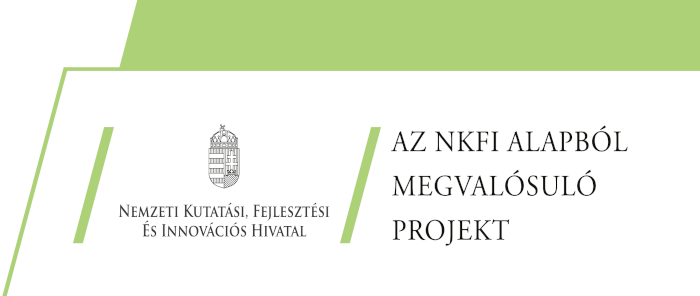Development of multiparameter testing systems for analysing the environmental impacts of microplastics
The project focuses on two distinct environmental elements: air and water. The protection and sustainable management of these two environmental elements and understanding the changes affecting their quality are indispensable prerequisites for the preservation of human and environmental health. Our project is aimed at studying micro particles that are present in these environmental elements and carrying out a complex analysis, from multiple aspects, of the risks posed by them. Human health and the quality and status of our environment are affected both directly and indirectly by such micro particles. The direct impacts (e.g. those of PM10 contaminants) have been largely explored in recent decades: those mechanisms are covered by extensive data and analyses in literature. Studies of indirect impacts have, by contrast, only just began; it was not until the recent years that scientists started to turn their attention to identifying and analysing these factors. Based on the above, the consortium will carry out a complex study, relying on the most recently generated knowledge and information, of the indirect problems caused by micro particles and affecting the above two environmental elements, in a complex way and works out proposed methodologies for addressing them.
With this project proposal our goal is to develop innovative methods in the following areas.
1 For the assessment of the microplastic pollution of (indoor and workplace) air
a) elaboration of a sampling and analytic method for the identification of microplastic particles and their properties
b) establishment of the concentration and size distribution of microplastic particlesemitted during specific activities, using a real time measuring instrument
c) analysis and evaluation of related microbiological and chemical hazards
2 For the establishment of the properties of airborne microplastic particles endangering human health:
a) identification of particles released from illegal plastic waste incineration and their properties.
b) studying microplastic particles' capability of adsorbing, and increasing the concentrations of, harmful substances, by model experiments
3 For exploring airborne microparticles' transmission of microbes:
a) studying viruses and bacterial communities settling on the surface of microplastic particles, with a focus on biofilm-forming pathogenic microorganisms
4 For the description of the properties of waterborne microplastic particles:
a) assessment of the harmful substance concentration impact with the help of model experiments
b) experimental method development for the assessment of the complex interactions between microplastics as well as chemical and biological agents
c) testing of combined impact on prokaryote and fish model system on the basis of ecotoxicological criteria
5 For the toxicological assessment of the impacts of microplastics in wastewater treatment processes:
a) assessment and evaluation of the environmental risk of microplastic particles through microbiological and ecotoxicological investigations
b) creation of a multiparameter testing system for the establishment of the microplastic content of water and wastewater, for the assessment of the potential risks
The outcomes of the project can be arranged in four categories:
1) A risk analysis system will be work out, on the basis of the measurement techniques intended to be developed, for sale in the market together with expert consultation. All methods developed, and all results gathered (as input data), during the completion of the project that is the subject of the application scheme will be combined to contribute to the development of the service
2) Technology descriptions, sampling and measurement methods and methodology proposals – that can be integrated in know-how and patented solutions – will be produced during the implementation of the project which will make proposals and provide technological procedures for both regulatory (legislative) and economic participants for the real-time detection of the microplastic contamination of the two highlighted environmental elements (air and water) and for the measurement of their indirect environmental health impacts, for the validation of the results and for possible remedial steps.
3) The results of the project will appear in scientific publications in domestic and international periodicals and in presentations and lectures in domestic and international organised events. The consortium finds it important to keep the community informed of the outcomes of the project, which we intend to achieve through regular media appearances and a website with continuously updated information posted.
4) It is particularly important for the consortium that the outcomes of the for-profit and non-profit cooperation should be integrated in the system of the university education of future scientists. This is intended to be achieved partly in the issuance of scientific students' associations (SSA) project, as well as BSc, MSc and PhD thesis themes in connection with the objectives and results of the project. On the other hand, the research results will be integrated in the current study materials whereby students will be provided with up-to-date information. Thirdly, the consortium members will offer positions for practical training for university students for enhancing their knowledge and experience and for laying down foundations for personalised doctoral training cooperation connections.
